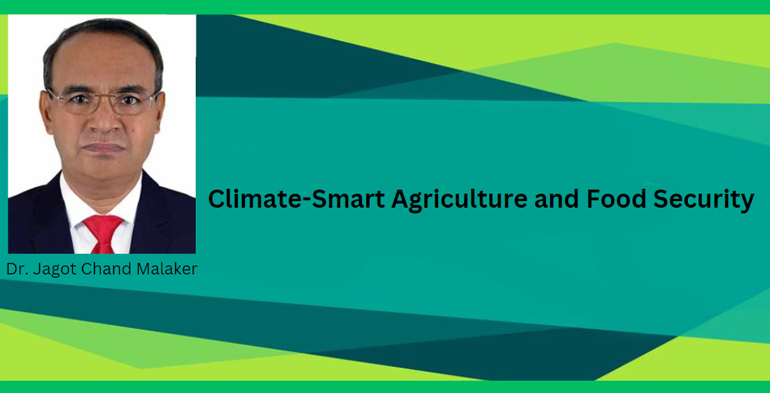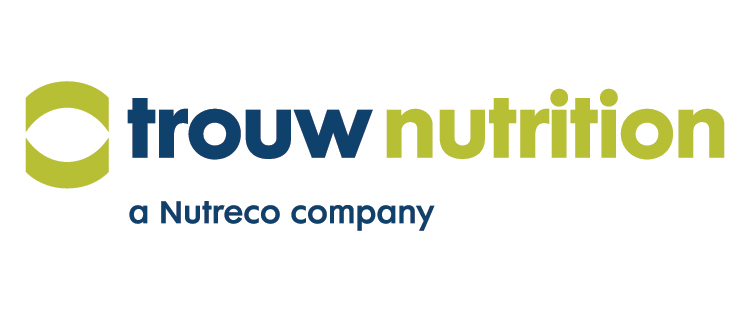
Dr. Jagot Chand Malaker: Bangladesh is an agro based country. Mostly farms of our country are small-scale and fragmented, with an average area of less than one hectare. Over time, our country is self-sufficient in food under the visionary leadership of Bangabandhu’s daughter, Honourble Prime Minister Sheikh Hasina. Bangladesh ranks 3rd in rice production, 3rd in vegetable production, 7th in mango production, 8th in potato and guava production. The country still depends heavily on imports for other crops and agricultural products such as wheat, vegetable oil, spices, fruits (fresh and dry) and cotton.
Farmers are growing crops, but they are facing some problems such as salinity, drought, and flood. Crops are often damaged by natural calamities such as tidal surge, hailstorm, fog, cold wave etc. Bangladesh also faces a tropical climate with high temperatures and frequent floods, cyclones and soil erosion. In the low-lying lands make it highly susceptible to rising sea levels, deforestation, soil degradation, and soil erosion. It has another two major challenges in the agriculture sector has faced various challenges such as reducing per capita arable land, increasing population, decreasing land productivity, and increasing demand for agricultural products.
CSA-technologies and practices regarding productivity, adaptation and mitigation.
Climate smart agriculture (CSA) practices to transform agro-food systems towards green and climate resilient practices in Bangladesh. Department of Agricultural Extension(DAE) is providing timely advisory services regarding climate smart agriculture and on imparting knowledge to farmers on Integrated Crop Management, Integrated Pest Management, Integrated Farm Management and on introducing new variety of disease resistant seeds and climate smart farming technologies. The Climate-smart agriculture (CSA) is an integrated approach to managing landscapes cropland, livestock, fisheries, forests, and green house gases emission that address the interlinked challenges of food security and climate change.
CSA For Crop land: Climate change signal regarding increase of temperature:
Due to heat stress increase disease, weed, pests and production cost will be increased so, here to use heat/temperature tolerant variety, mulching, water management, intercropping, crop diversity and more plantations would be the options to address heat stress. Early flash flood or flood: Use short durated boro rice varieties, flood tolerant verities and use late transplanting t. aman varieties would be the best options if crop damaged by flood, salinity: saline water tolerant plant variety in coastal areas would be used. Drought: supplementary irrigation in t. aman cultivation, rain water harvest and also use drought tolerant verities. Cold wave: Boro seed bed is seriously affected, so use polythene sheet to cover at night, build air break boundary, use ash and ensure irrigation in the evening.
In the southern part of Bangladesh, climbing vine type vegetables are also commonly grown on trellises over the pond. Meanwhile, floating vegetable gardens have also been introduced in tidal flooded areas, using water hyacinth layered with soil. Kangkong (water spinach) cultivation was always done near ponds. In low-lying waterlogged regions, farmers in Bangladesh have historically utilized a host of ridging and furrowing methods. The Sorjan system, for example a variation on pyramid cropping is a system of tall beds for vegetable and crop production alternating with furrows, or trenches, planted with submergence tolerant plants or used for fish production.
CSA for Livestock: For successful livestock raring and production three aspects should be required eg. Feed, Housing and Treatments but due to climate change these three things are badly affected. Due to temperature stress, flood and drought, feed availability scope would be limited. So, balance feed, fodder crop management, improved feed management and rotational grazing would be best options. Regarding housing: for large ruminant’s floor of housing should be slope with drain and use brick and keep well ventilated. For small ruminants, it’s very sensitive’s to cold so, macha should be developed. For poultry, three tier housing should be developed for adult, medium aged poultry and chicks. In the winter also ensure light for better temperature. Regarding treatment: use of vitamins and minerals proper vaccination to arrest mortality and also ensure dewarming.
CSA for Fisheries: Due to cloudy weather less presence of oxygen in water so, netting in the pond will address this problem. Lime application would be other options. Proper feed managements on the basis of layer based population of fishes will get more production.
In the souther part of the country, initially used for shrimp farming, for example, traditional gher farming an aquaculture pond in non-saline wetlands with raised dikes for vegetable production has grown increasingly complex, allowing for the production of shrimp, fish, and prawns.
CSA for Forests: Forests help to slow the rate of climate change by removing carbon dioxide from the atmosphere and storing it. This is a direct effect, as the primary driver of climate change is the over abundance of carbon dioxide in the atmosphere. Trees and forest ecosystems help limit global warming by reducing the concentration of carbon dioxide in the atmosphere, alongside simultaneous 'co-benefits' for bio diversity, local economies, human health and leisure. So, arrest deforestation and more plantations will manage these issues.
Causes of green house gases emission and mitigation: Due to green house gases emission globally 8-10% food loss and food waste are happening. The major contributors to the increases the amount of greenhouse gases are increased number of factories, increased number of automobiles, deforestation etc. The greenhouse gases never let the radiations escape from the earth and increase the surface temperature of the earth.
Now a day’s total greenhouse gas (GHG) emissions across the world, plus breakdowns of other major gases including methane and nitrous oxide. Energy production of all types accounts for 72 percent of greenhouse gas emissions. The main greenhouse gases whose concentrations are rising are carbon dioxide, methane, nitrous oxide, hydro chlorofluorocarbons (HCFCs) and hydro fluorocarbons (HFCs).
Possible mitigation options: If we want to mitigate green house gas emission we have to save energy at home, change your home's source of energy, walk, bike or take public transport, switch to an electric vehicle, consider your travel with public transport, reduce, reuse, repair and recycle, eat more vegetables and throw away less food etc.
How to ensure safe food security and nutrition safety
Combination of all the advanced technologies of single component of the farm with the use of by-products of one component of another component of the farm. Achieving desired yield through optimum use of resources through integration of improved technology across farm components (rice cultivation, homestead fruit and vegetable cultivation, poultry/chicken rearing, cattle rearing, goat/sheep rearing, fish farming and off farm activities) and considering their inter-relationships and environment friendly issues. Integrated homestead, crop, fisheries and livestock production systems are highly efficient; potentially crop residues are used as livestock feed; the waste products (e.g. feces and urine) are fed into biogas digesters and the effluent used to fertilize ponds for aquatic plant/algae production with fish farming as the terminal activity.
Food loss and waste accounts for 8-10 % global greenhouse gas emission. This emission contributes to unstable climate, which in turn threatens to food security. Therefore, reducing food loss and food waste is one of the most impactful climate solutions. Let’s stop food loss and waste, for people and the world. Food loss happens at production, processing, and transport/distribution levels but food waste happened at consumers’ level, it’s an offence to waste food. It should be addressed also create the awareness regarding nutrition. We have to follow Good Hygiene Practice (GHP) for food safety. Every farmer’s house spaces will be used for safe food production. It will ensure safe food security and nutritional security of the country.
We have to adopt with changed climate for successful production. Also GAP should be ensured at farm to fork for getting healthy, safe and nutritious food for the peoples. Climate change impacts on our agricultural productivity, we are facing different stress, yield loss and crop damage. Ultimately it threatens our safe food security and nutrition. We are adopting with the climate change e.g. have many stress tolerant varieties such as saline, flood, drought, heat and also have varieties to escape early flash floods and late transplanting varieties in transplant aman rice. We have many management practices of adoption options for drought supplementary irrigation in t. aman season, adopt with cold wave in boro seed bed. We have six season variation, plenty rainfall, clear sunshine and fertile land so we can grow many new crop in our country very efficiently. Regarding soil nutrient management integrated nutrient management (INM) would be the best options of address recent climate changed situations and uphold our productivity. So Climate smart agriculture will plat vital role to ensure safe food production and nutrition security
Writter: Dr.Jagot Chand Malaker, Additional Director, Department of Agricultural Extension, Farmgate, Dhaka 1215, Bangladesh.





















